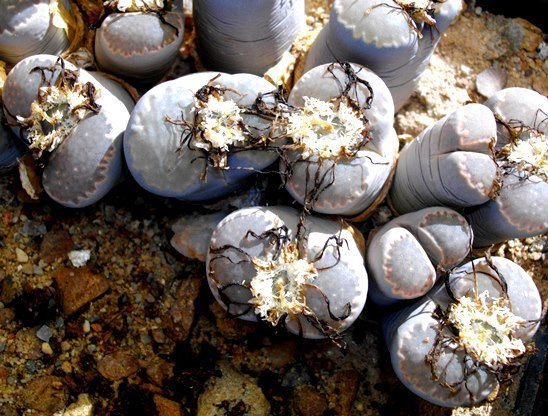Lithops salicola

Author: Ivan Lätti
Photographer: Ivan Lätti
Lithops salicola is a dwarf leaf succulent bearing paired leaves separated by a central fissure, otherwise joined. The clumps formed by the leaf-pairs reach more than 25 cm in diameter, although this may take decades and comprise a couple of hundred pairs.
The flat to slightly convex leaf-pair tops are darkly translucent apart from a fine to coarse net crisscrossing the windows on the two lobes. There is a distinct margin around each window, its margin sometimes toothed. Leaf colouring may be dull dark green, grey-green, brown or even violet.
White flowers are produced, varying in diameter from 2 cm to 5 cm. Flowers arise from the central fissure in the leaf-pair during autumn. The fruit has five or six locules, its valve-wings broad. The seeds are yellow-brown and smooth to wrinkled.
The distribution of this plant is in the southern Free State. Its habitat is low limestone ridges and slopes, as well as the edges of brackish pans. Salicola (Latin) means salt-dwelling. The species is not considered to be threatened in its habitat early in the twenty first century (Smith, et al, 1998; www.cactus-art.biz; www.floweringstones.co.za; www.redlist.sanbi.org).

